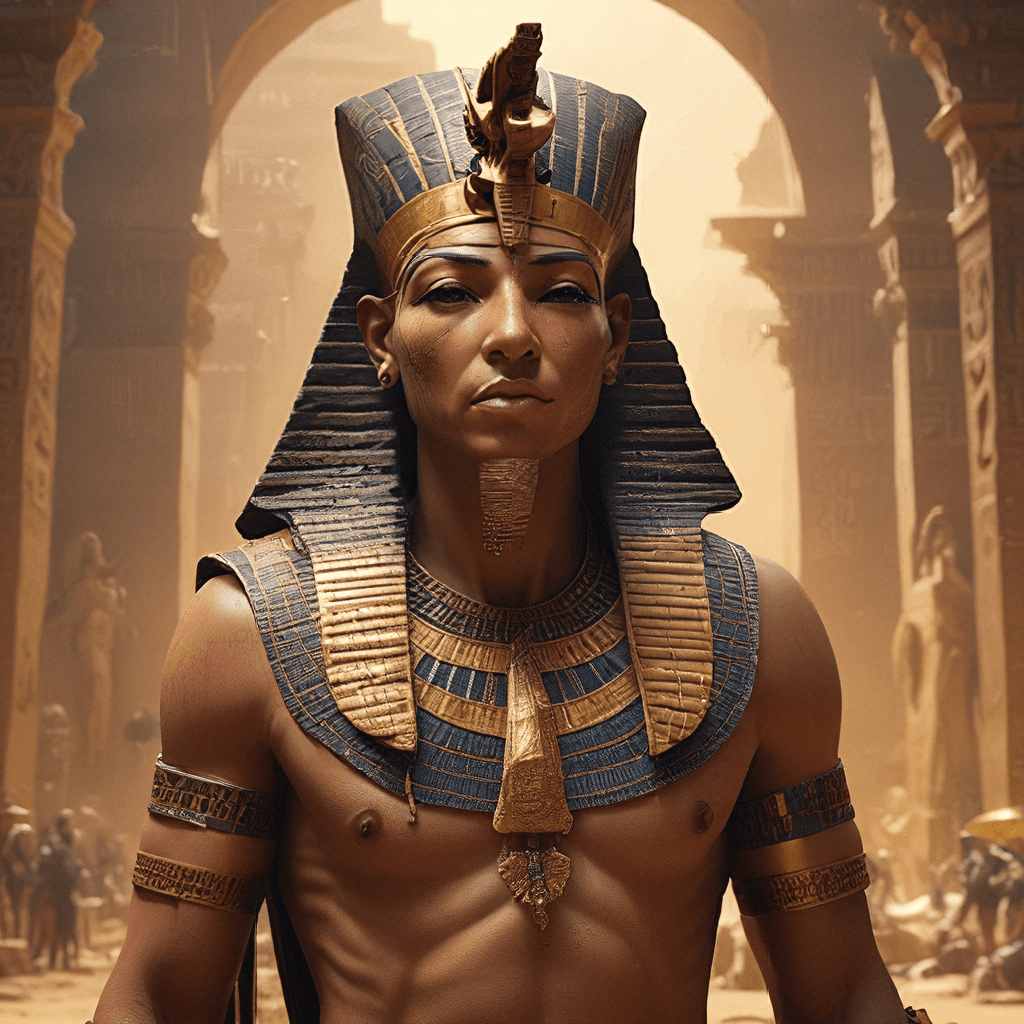From Humble Beginnings to Eternal Glory: The Pharaohs’ Ascent to Power
1. Origins of the Pharaohs: The Predynastic Period
The story of the pharaohs, those powerful rulers of ancient Egypt, begins long before the grand pyramids were built or the mighty armies marched into battle. In the predynastic period, around 6000 BC, the Nile River, a life-giving force, cradled the first settlements in the fertile valley. People learned to cultivate the land, growing crops and raising livestock, creating the foundation for a more complex way of life. Communities grew, forming villages and later, larger settlements, each led by a chief or leader. These communities, known as nomes, became centers of power, with their leaders vying for control over resources and land. By 3100 BC, the stage was set for a remarkable transformation, one that would lead to the unification of Egypt and the rise of the pharaohs.
2. The Unification of Egypt: The First Dynasty
The legend of Narmer, a powerful king, is central to the story of Egypt’s unification. He is believed to have united Upper and Lower Egypt, bringing a period of stability and order after centuries of conflict between the nomes. Narmer’s reign marked the beginning of the First Dynasty, a period of significant change and growth. The pharaohs, now supreme rulers, established a powerful central government, laying the groundwork for a strong and unified nation. This centralized power was vital for organizing large-scale projects, like the construction of irrigation systems and temples, which would help secure Egypt’s future. The pharaohs were no longer just leaders of their nomes, but the embodiment of the divine will, claiming to be the living embodiment of the god Horus, thus earning the title “pharaoh,” meaning “Great House.”
3. The Old Kingdom: The Golden Age of the Pharaohs
From around 2686 BC to 2181 BC, Egypt entered the Old Kingdom, a period of remarkable achievements. The pharaohs of this era were known for their ambition and their commitment to building a legacy that would last for millennia. The most famous pharaohs of this period, Khufu, Khafre, and Menkaure, are remembered for the awe-inspiring pyramids they constructed as their tombs. These massive structures, along with temples and other monumental works, are testament to the technological prowess and artistic skill of the ancient Egyptians. Beyond the grand architecture, the Old Kingdom witnessed a flourishing of art, literature, and religion. The pharaohs patronized artists and writers, leaving behind a rich tapestry of stories, sculptures, and paintings that provide glimpses into the lives and beliefs of the ancient Egyptians.
4. The First Intermediate Period: A Time of Instability
The grandeur of the Old Kingdom eventually gave way to a period of instability known as the First Intermediate Period. The central authority of the pharaohs weakened, regional rulers, each vying for power, emerged, leading to fragmentation and conflict. This decline was caused by many factors, including droughts, famine, and internal unrest. The once unified Egypt splintered, with local rulers challenging the authority of the pharaohs. This period saw a decline in construction projects, as resources were diverted to military purposes.
5. The Middle Kingdom: Rebuilding the Nation
From approximately 2055 BC to 1650 BC, a new era dawned in Egypt, known as the Middle Kingdom. Mentuhotep II, a powerful ruler, reunited Egypt under his rule, restoring stability to the land. The pharaohs of the Middle Kingdom focused on rebuilding the nation’s infrastructure, establishing new trade routes, and expanding Egypt’s influence. They also fostered a revival of art and culture, commissioning magnificent temples and monuments. The Middle Kingdom was a time of prosperity and renewed national pride.
6. The Second Intermediate Period: Foreign Invasions and Internal Conflicts
The Second Intermediate Period, spanning approximately 1650 BC to 1550 BC, was marked by chaos and conflict. The Hyksos, a group of powerful foreigners, invaded Egypt, exploiting the internal weaknesses of the nation. They established control over Lower Egypt, forcing the native rulers to retreat to the south. This period saw a mixture of internal power struggles and foreign domination. The Hyksos brought new military technology to Egypt, including the war chariot and the composite bow, which they used to conquer much of the land. The Egyptian people, however, would eventually rise up to challenge the Hyksos and reclaim their land.
7. The New Kingdom: The Empire Era
The New Kingdom, stretching from 1550 BC to 1069 BC, ushered in a new era of power and expansion for Egypt. Ahmose I, a courageous pharaoh, led the fight against the Hyksos, expelling them from Egypt and re-establishing the kingdom’s boundaries. This marked the beginning of a period of remarkable expansion and prosperity, known as the Empire Era. The pharaohs of the New Kingdom, such as Thutmose III, Hatshepsut, and Amenhotep III, led campaigns across the Near East, building an empire that stretched from Nubia in the south to Syria in the north. Egypt’s influence spread far beyond its borders, bringing Egypt into contact with other civilizations and fostering trade and cultural exchange. The New Kingdom witnessed a flourishing of art and architecture, with the construction of the magnificent temples at Karnak and Luxor. The pharaohs of this era were not only powerful rulers, but also patrons of the arts, fostering an era of creativity that left an enduring legacy for the world.




